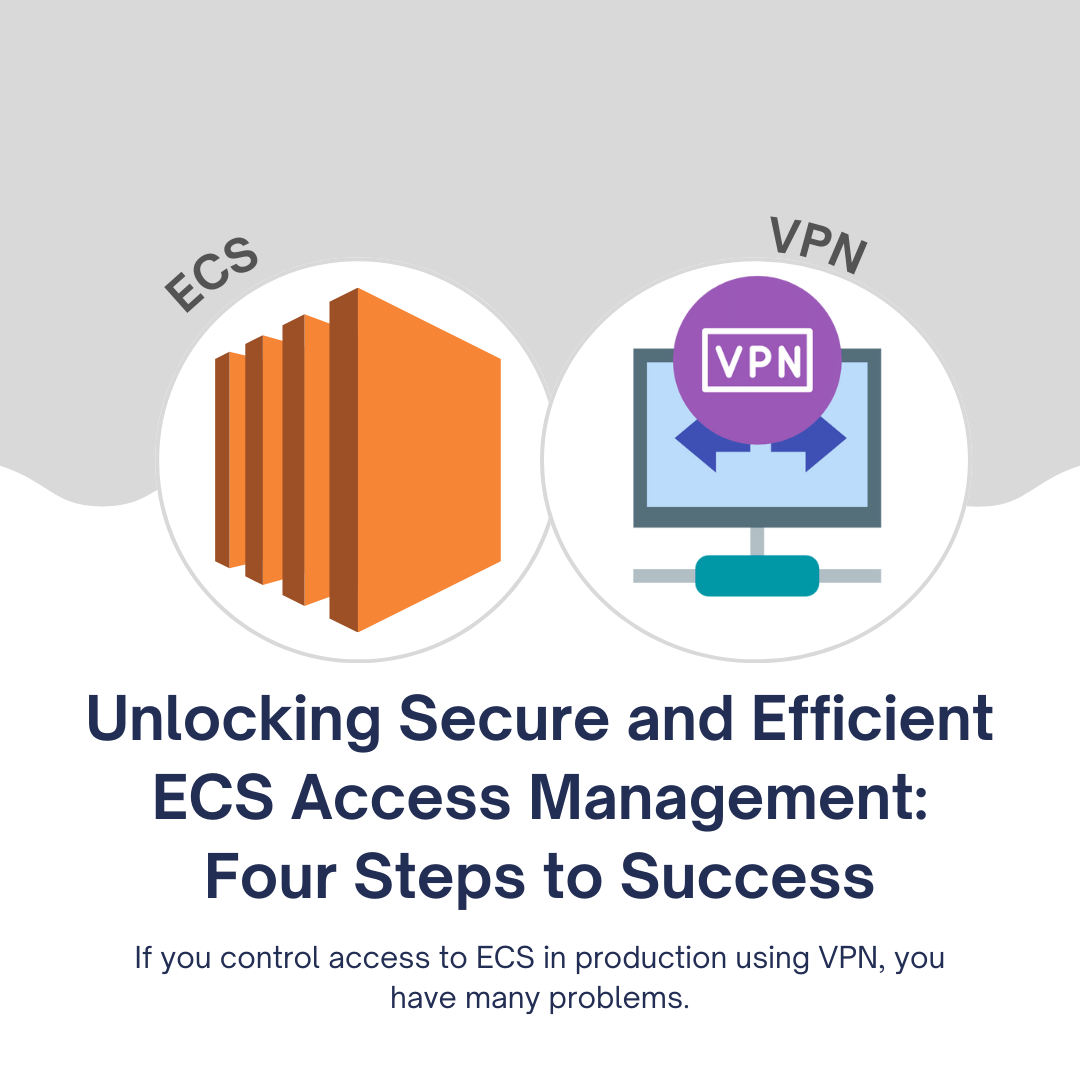Unlocking Secure and Efficient ECS Access Management: Four Steps to Success

Access management in the world of cloud computing is a multifaceted challenge. The complexity of orchestrating secure, efficient access to resources like Amazon Elastic Container Service (ECS) can lead to vulnerabilities that often remain hidden. In this article, we'll delve into the five major problems associated with ECS VPN access and explore how to mitigate their impacts effectively. We'll also discuss low-hanging fruits that organizations can leverage to bolster their ECS access management strategies.
The Critical Role of Fast Access
Fast access to the right engineers in a production environment is paramount for ensuring product speed, troubleshooting, bug fixes, and incident resolutions. However, many organizations grapple with inefficient access solutions, resulting in security risks and workflow bottlenecks.
The Five Biggest Problems
Building Infrastructure for ECS Access Using VPN
Setting up VPN-based access to ECS can be a cumbersome and error-prone process. It often involves complex configurations and maintenance that can hinder productivity.
Hidden Vulnerabilities
Certain crucial components of access management are often overlooked, creating hidden vulnerabilities that can serve as potential attack vectors. These include:
- Single Sign-on & MFA: Lack of robust Single Sign-on (SSO) and Multi-Factor Authentication (MFA) mechanisms can expose your system to unauthorized access.
- Audit Trials and PII Protection: Failing to track and audit access activities can compromise data privacy and expose Personally Identifiable Information (PII).
- Compliance (GDPR, PCI, SOC2, and HIPAA): Non-compliance with industry-specific regulations can lead to severe legal consequences.
- Developer Experience: A poor developer experience can hinder productivity and increase the likelihood of employees seeking alternative, less secure access methods.
Implementing Solutions
To address these issues effectively, consider these four steps:
1. Gradual Implementation of Critical Features
Leverage the 80/20 rule by gradually implementing the essential features. Start by adding ECS to systems you already manage. For example, if your organization uses Google Workspaces, you can integrate ECS with Google OAuth for SSO, reducing the need for a separate LDAP directory.
- SSO Integration: Integrating SSO into SSH access can be challenging, but tools like AWS/Google Cloud Cloud Shell solutions or Runops can simplify the process. Avoid making SSO implementation overly complex; focus on what you can integrate with existing tools to streamline access.
- Prioritization: Tailor your access management approach based on your industry's specific needs. If regulatory compliance is less critical, prioritize improving developer experience, SSO, and MFA before investing in audit features.
2. Industry-Relevant Access Features
Consider the number of steps a developer must take to access ECS. In industries with fewer regulatory constraints, aim to simplify access workflows. Reducing the steps required can enhance efficiency and security.
- Fintech Example: In highly regulated sectors like fintech, prioritize meeting compliance requirements like PCI. While this may result in a more complex access process, it is essential for business operations. Start with compliance and then focus on improving the developer experience.
3. Leveraging Comprehensive Solutions
To reduce complexity, consolidate access management across various resources, including ECS, AWS/GCP, databases, Kubernetes, and servers, into a single tool. While you may have specialized tools for individual use cases, adopting a unified solution can streamline access management.
- Example: Consider using tools like Runops, which offer a single interface for managing access across multiple platforms. While the user experience may not be perfect for each platform, the convenience of a single tool outweighs managing multiple tools.
4. Adding Friction to Unwanted Access Methods
To deter engineers from using suboptimal or insecure access methods, introduce controlled friction. This means making the right way the easiest and most convenient option.
- Example: If engineers are accessing resources through insecure methods, such as the AWS web console instead of automated Infrastructure as Code (IaC) pipelines, introduce friction by requiring a Jira request for console access. Over time, improve the experience of the preferred method until it surpasses the ease of console access.
In conclusion, addressing the hidden vulnerabilities of ECS VPN access requires a strategic approach that balances security, compliance, and efficiency. By following these four steps, organizations can enhance their access management practices, reduce risks, and improve overall productivity in their cloud environments. Remember, it's essential to adapt these strategies to your specific industry and organi
